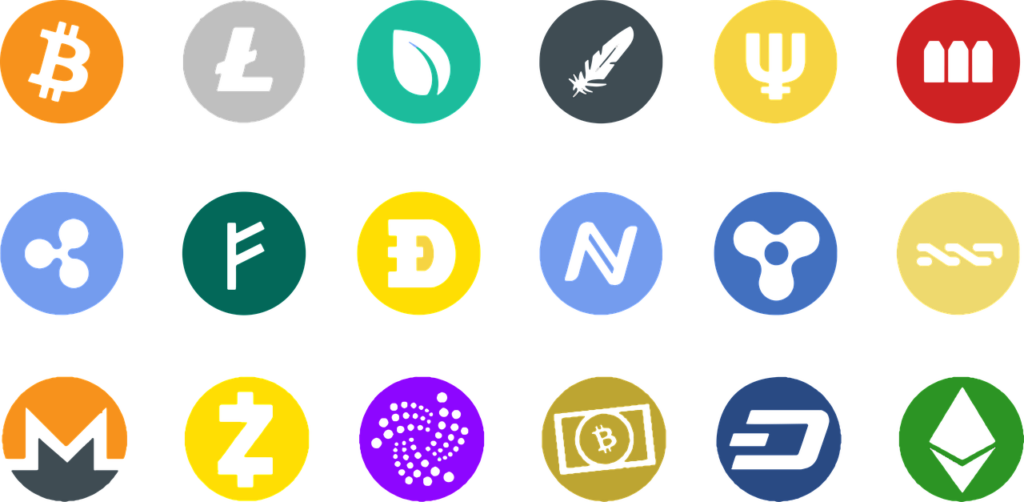Before writing this article I tried to think about what I was doing in 2009. I know I was still in high school, and investing wasn’t something I was too familiar with. The only time I remember having a conversation about investing was when a teacher scolded me about playing call of duty but not owning any stock. It wasn’t until I took economics in high school that I understood what she was saying. In class, we touched on the financial markets, but cryptocurrencies were not something we discussed.
Most of us didn’t know cryptocurrencies existed until 2017 when Bitcoin was on a bull run. The price pulled back into the $3,858.00 area and then took a rocket ship to an all-time high of $64,899.00. That all-time high broke on October 19th, 2021, to $66,999.00. Currently, the price of bitcoin is $20,716.04 and with the market in a bear market, this is a good time to learn about different market sectors and possibly look for opportunities. If you are new to investing and are unsure, please see a financial advisor as this article is for educational purposes 😊.
So, what is cryptocurrency?
Cryptocurrencies are digital or virtual tokens that use cryptography to secure their transactions and control the creation of new units. Cryptography is the practice of secure communication in the presence of third parties. It uses mathematical algorithms to encode and decode data. Cryptography is used in a variety of applications, including email, file sharing, and secure communications. Cryptocurrencies are decentralized, meaning they are not subject to government or financial institutional control. Cryptocurrencies are often traded on decentralized exchanges and can also be used to purchase goods and services.
Cryptocurrencies can be divided into three categories: coins, tokens, and altcoins.
- Coins are cryptocurrencies that have their blockchain. Bitcoin and Ethereum are examples of coins.
- Tokens are cryptocurrencies that are built on top of an existing blockchain. Tokens can represent a variety of assets, such as loyalty points or other cryptocurrencies.
- Altcoins are alternative coins to Bitcoin. Altcoins are often similar to Bitcoin in terms of their architecture and use cases, but they may have different economic models or use different proof-of-work algorithms.

Here are 15 different Cryptocurrencies
1. Bitcoin (BTC)
Bitcoin is the first and most well-known cryptocurrency. It was created in 2009 by an anonymous individual or group of individuals under the pseudonym Satoshi Nakamoto. Bitcoin is decentralized and uses a public ledger, called a blockchain, to record transactions. Bitcoin is mined through a process called proof-of-work (PoW), in which miners compete to solve complex mathematical problems to validate transactions on the blockchain.
2. Ethereum (ETH)
Ethereum is another popular cryptocurrency that uses a blockchain to record transactions. Ethereum also has its programming language, which allows developers to build decentralized applications (dapps) on top of the Ethereum blockchain. Ethereum is mined through a process called proof-of-stake (PoS), in which miners are rewarded based on their stake, or ownership, in the Ethereum network.
3. Bitcoin Cash (BCH)
Bitcoin Cash is a fork of the Bitcoin blockchain that was created in 2017. Bitcoin Cash has a larger block size than Bitcoin, which allows for more transactions to be processed on the Bitcoin Cash blockchain. Bitcoin Cash is also mined through a process called proof-of-work (PoW).
4. Litecoin (LTC)
Litecoin is a cryptocurrency that was created as a fork of the Bitcoin blockchain in 2011. Litecoin has faster transaction times and lower transaction fees than Bitcoin. Litecoin is also mined through a process called proof-of-work (PoW).
5. Ripple (XRP)
Ripple is a cryptocurrency that was created to provide a faster and more efficient way of sending money internationally. Ripple uses a consensus ledger, which allows for transactions to be processed quickly and securely. Ripple is not mined through a process of proof-of-work or proof-of-stake. Instead, all Ripple users can validate transactions on the network.
6. Stellar (XLM)
Stellar is a cryptocurrency that was created to provide a fast and efficient way of sending money internationally. Like Ripple, Stellar uses a consensus ledger to process transactions. However, Stellar also allows for the creation of smart contracts and decentralized applications (dapps). Stellar is not mined and all users can validate transactions on the network.
7. Chainlink (LINK)
Chainlink is a type of cryptocurrency that is used to power the chainlink network. The Chainlink network is a decentralized network of nodes that connects blockchain-based smart contracts to off-chain data sources. Chainlink nodes are rewarded with LINK tokens for providing data and services to smart contracts. Chainlink is designed to provide a secure and reliable connection between blockchain-based smart contracts and off-chain data sources. Chainlink is one of the most popular cryptocurrencies, with a market capitalization of over $4 billion. Chainlink is an ERC20 token and is traded on many major cryptocurrency exchanges.
8. Dash (DASH)
Dash is a cryptocurrency that focuses on privacy and speed. It uses a technique called PrivateSend to make it difficult to trace transactions on the blockchain. It also has InstantSend, which allows for near-instantaneous transactions. Dash is mined through a process called proof of work (PoW).
9. Zcash (ZEC)
Zcash is a cryptocurrency that focuses on privacy and security. It uses a technique called zero-knowledge proofs to make it difficult to trace transactions on the blockchain. It’s mined through a process called proof of work (PoW).
10. Polkadot (DOT)
Polkadot is a decentralized network that enables interoperability between different blockchains. It is powered by a unique consensus mechanism called “Proof of Stake” (PoS), which allows users to validate transactions and earn rewards for their participation. Polkadot also supports ” smart contracts”, which are programs that can be used to automate transactions and other processes on the network.
11. Solana (SOL)
Solana is a next-generation cryptocurrency that promises to offer high speeds and scalability. Its developers claim that it can process up to 50,000 transactions per second. Solana also has its mainnet, which went live in March 2019. The project is open-source and backed by several well-known investors, including Polychain Capital, Andreessen Horowitz, and CoinBase Ventures.
12. EOS (EOS)
EOS is a cryptocurrency that uses a blockchain to record transactions. EOS also has its programming language, which allows developers to build decentralized applications (dapps) on top of the EOS blockchain. EOS uses a delegated proof-of-stake (DPoS) consensus algorithm, which allows for more efficient transaction processing. EOS is not mined; instead, all users can validate transactions on the network.
13. Bitcoin Gold (BTG)
Bitcoin Gold is a fork of the Bitcoin blockchain that was created in 2017. Bitcoin Gold uses a different proof-of-work (PoW) algorithm than Bitcoin, which allows for more decentralization. Bitcoin Gold is also mined through a process called proof-of-work (PoW).
14. Ethereum Classic (ETC)
Ethereum Classic is a fork of the Ethereum blockchain that was created in 2016. Ethereum Classic has a different philosophical approach than Ethereum, which focuses on immutability and neutrality. Ethereum Classic is also mined through a process called proof-of-work (PoW).
15. Cardano (ADA)
Cardano is a cryptocurrency that is built on blockchain technology. Cardano is different from other cryptocurrencies because it uses a Proof of Stake algorithm instead of a Proof of Work algorithm. Cardano also has a smart contract platform that allows for the development of decentralized applications. Cardano has several features that make it unique among cryptocurrencies. First, Cardano uses a Proof of Stake algorithm instead of a Proof of Work algorithm. This means that Cardano is more energy efficient than other cryptocurrencies. Second, Cardano has a smart contract platform that allows for the development of decentralized applications. Finally, Cardano is backed by several major organizations, including Input-Output Global (IOG), an experienced blockchain development team. Where can we find information about cryptocurrencies and learn more about their development?
We can review the white pages to learn more about the different cryptocurrencies and what their uses are. A white page for crypto is a document that outlines the key information about a cryptocurrency project. This can include information about the team, the technology, the roadmap, and more. White pages are typically used by investors and analysts to get a better understanding of a project before making an investment. To find the white pages on cryptocurrencies you can visit these sites Cryptocurrency Prices, Charts And Market Capitalizations | CoinMarketCapand CryptoSlate – News, Data and Directory. You can also find white papers on your crypto exchange.
What is a crypto exchange?
A crypto exchange is a digital marketplace where crypto assets can be bought, sold, or traded. Cryptocurrency exchanges typically charge a fee for each transaction. Some exchanges also allow users to trade crypto assets for other assets, such as fiat currencies or other crypto assets. There are a number of crypto exchanges available for trading cryptocurrencies. Some of the most popular ones include Coinbase, Binance, and Kraken. Each exchange offers different features and benefits, so it’s important to choose one that best suits your needs. For example, Coinbase is one of the most user-friendly exchanges and is perfect for beginners, while Binance is a more advanced exchange with a wider range of features. Kraken is another popular option that offers low fees and a wide range of currency pairs. Whichever exchange you choose, make sure to do your research to ensure it’s reputable and suits your needs.
What is blockchain? Can blockchain revolutionize finance?
Blockchain is a digital ledger of transactions. It is constantly growing as “completed” blocks are added to it with a new set of recordings. Each block contains a cryptographic hash of the previous block, a timestamp, and transaction data. The blockchain is not just the underlying technology behind Bitcoin and other cryptocurrencies; it has the potential to revolutionize a wide range of industries, from banking and finance to healthcare and supply chain management. By providing a secure, tamper-proof way of storing data and conducting transactions, blockchain could help streamline processes, reduce costs, and minimize risk.
While blockchain technology was originally developed for cryptocurrencies like Bitcoin, it has the potential to revolutionize many other industries – including finance.
So how can blockchain change finance?
For one, blockchain can help to streamline financial transactions. At the moment, these often involve a lot of paperwork and can be very slow. With blockchain, all the information about a transaction can be stored in one place, making the process much faster and more efficient.
Another way blockchain could change finance is by making it more secure. Blockchain records are tamper-proof and decentralized, they would be very difficult for criminals to manipulate. This could help to reduce fraud and make financial institutions more secure.
Finally, blockchain could also help to make financial services more accessible. For example, blockchain-based “smart contracts” could be used to automate the process of issuing loans or other financial products. This could make it easier for people to access the services they need, without having to go through a lengthy and complicated process.
We have seen some examples of how the blockchain can be used to authenticate products and art! NFT’s, or non-fungible tokens, are a type of digital asset that is built on blockchain technology. NFT’s are unique and cannot be interchanged or replaced with another identical token. This makes them ideal for use cases such as digital art, gaming, and collectibles. NFT’s have gained popularity in recent years due to the rise of blockchain technology and the increasing adoption of cryptocurrency. Remember to do your research and not just buy an NFT because someone told you to.
In Summary
Cryptocurrencies and blockchain technology are still relatively new, so it can be difficult to understand the terminology and how everything works. We hope this article has helped demystify some of the concepts for you and given you a better understanding of these technologies. If you’re interested in learning more, we highly recommend doing additional research to get a better understanding of how cryptocurrency and blockchain work. Please feel free to share this article with anyone that may find this article useful. Until next time!

